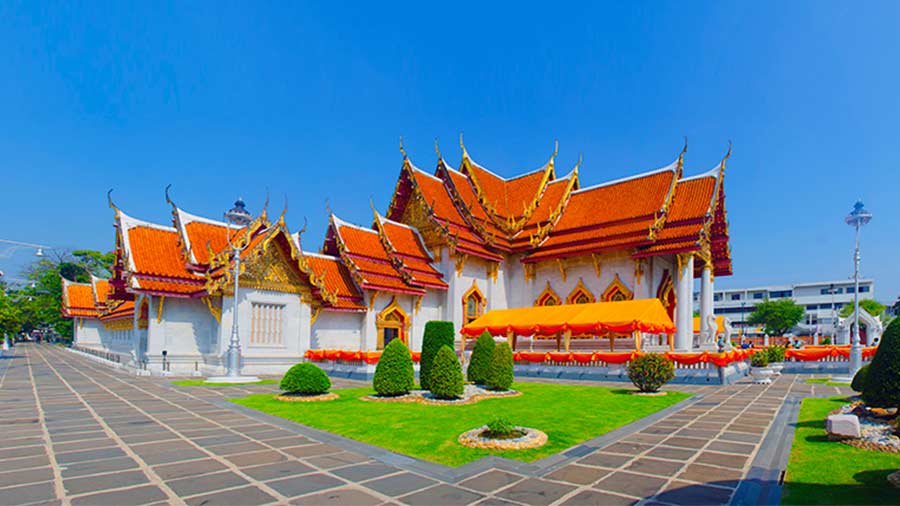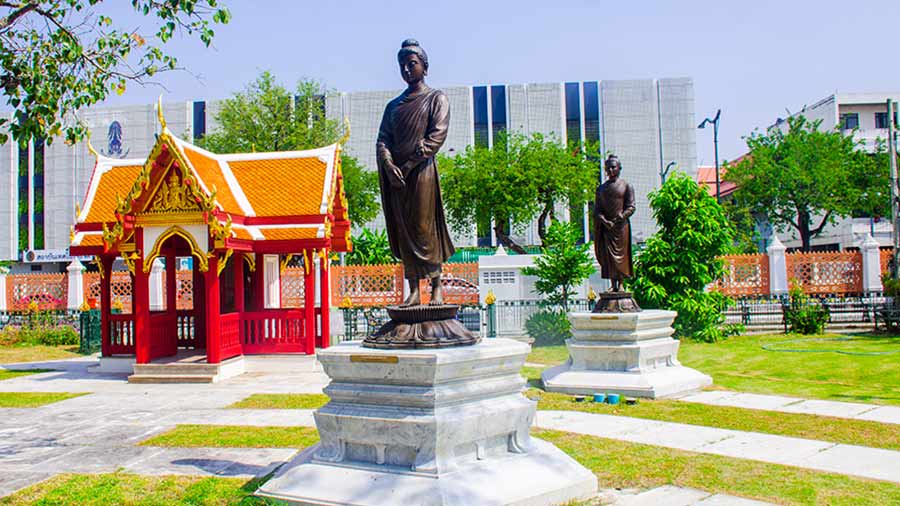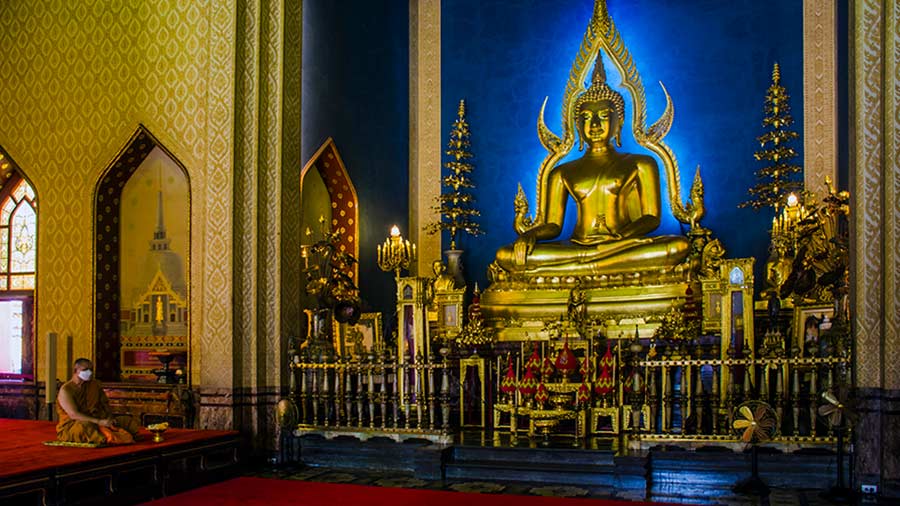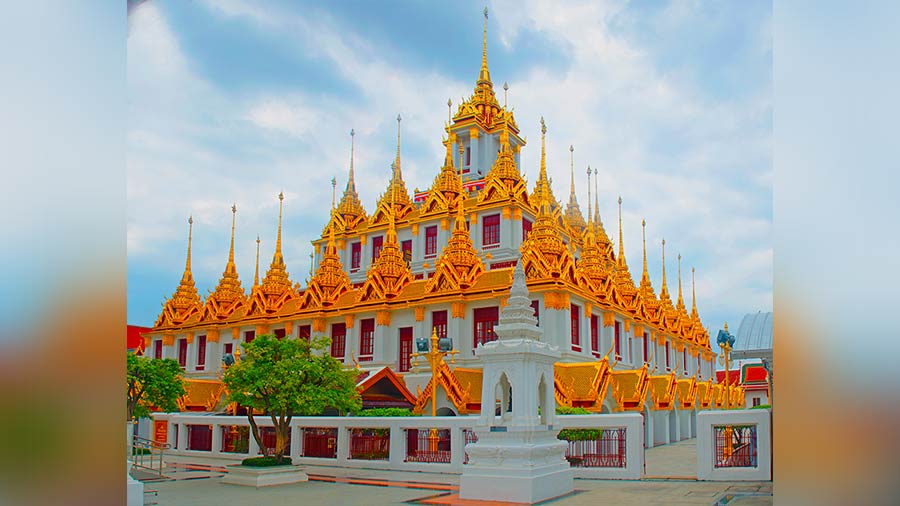Bangkok has its share of Buddhist temples, locally known as wats. The word wat originates from the Sanskrit word mat. The temples range from tiny roadside shrines to towering structures housed in gigantic temple complexes. One of the most beautiful among these temples is the Wat Benchamabophit, popularly known as the Marble Temple.

Side view of Wat Benchamabophit
The present structure of the temple dates back to 1899 but the original temple dates back to an unknown period and was initially known as Laem Temple or Sai Thong Temple. Architectural evidence suggests that it was built during the Ayutthaya period (1351 – 1767). In 1899, Rama V, King of Siam (Siam is the old name of Thailand) decided to build a new royal palace in the northern regions of Bangkok. The new palace was built in western style complete with gardens and lawns a sharp contrast with the old Royal Palace (now known as Grand Palace) which was rather cramped with numerous structures. It came to be known as the Dusit Palace.

An assembly hall on the south side of the canal
The new palace led to the restoration of the nearby age-old temple. After restoration it was officially named as Wat Benchamabophit Dusitvanaram, literally meaning ‘the Temple of the fifth King located near Dusit Palace’. It was designed by Prince Narisara Nuvativongse (popularly known as Prince Norris), half brother of King Rama V. It was built from Carrara marble imported from Italy, hence came to be known as the Marble Temple.
Today the temple lies on a large complex south of the Dusit Palace grounds. The canal runs through the centre of the complex. The canal, complete with fountains, has three cast iron bridges spanning across it. The main temple is on the northern side of the canal; the south section contains a bell tower along with several halls and pavilions.

Buddha statue beneath the cloister wall
The main temple is built in typical Thai style and houses a giant golden Buddha statue with a glowing blue background. The temple has beautiful stained glass windows, depicting Thai motifs. This is a European influence not commonly found in Thai Buddhist temples. Behind the temple is an open courtyard surrounded by cloister walls housing several Buddha statues in several postures.

Buddha statues and a pavilion behind the temple
Behind the courtyard is an open space housing several Buddha statues placed under a Banyan tree. The Banyan tree is an offshoot of the Banyan Tree in Bodh Gaya, where Buddha attained enlightenment. The other side of the canal houses several other structures including a bell tower, prayer and assembly halls along with monk’s quarters.

The giant Buddha statue inside the Wat Benchamabophit main temple
Although one of the major and most beautiful temples of Bangkok, it receives a limited number of tourists because of its isolated location, which is far from other popular tourist spots of Bangkok. The nearby Dusit Palace has also been closed to tourists, thus reducing the number of visitors to the Marble Temple of Bangkok.


